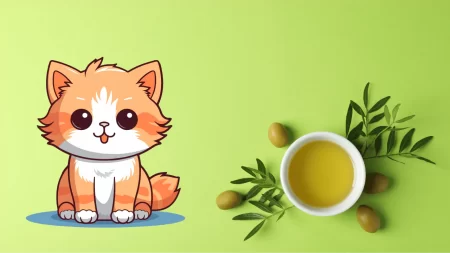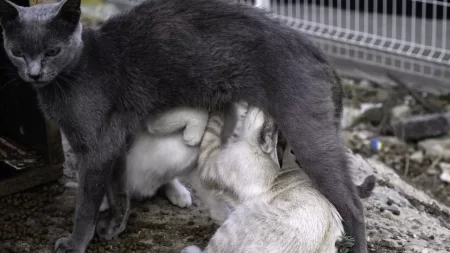If you need to change your cat’s food for any reason, such as age, weight, health, or preference, you may wonder how to do it without causing stress or digestive problems for your feline friend.
Cats are creatures of habit and can be very picky about their food, so switching to a new diet requires some patience and planning.
In this article, we will explain the importance of a proper diet for cats, how to transition your cat to a new diet, some common mistakes to avoid, and challenges to overcome.
Importance of a Proper Diet for Cats
Cats are obligate carnivores, which means they need animal protein to survive and thrive. They also have specific nutritional needs that vary depending on their life stage, activity level, health condition, and individual preferences. A proper diet for cats should provide:
- High-quality protein from meat, fish, or poultry sources.
- Taurine and arginine are amino acids that are essential.
- Healthy fats, such as omega-3 and omega-6 fatty acids.
- Vitamins, minerals, and antioxidants.
- Moisture and fiber to support hydration and digestion.
A proper diet for cats should also avoid:
- Excessive carbohydrates, especially from grains or fillers
- Artificial colors, flavors, or preservatives
- By-products or low-quality ingredients
- Allergens or intolerances that may cause adverse reactions
Choosing the right food for your cat can help them maintain their ideal body weight, support their immune system, prevent or manage health issues, and enhance their quality of life.
How to Transition Your Cat to a New Diet?
Once you have decided on the best food for your cat, you need to introduce it gradually and monitor your cat’s reaction. A sudden change in diet can cause your cat to reject the new food, develop digestive upset or lose their appetite. Here are some steps to follow when transitioning your cat to a new diet:
1. Choose the Right Food
Before you switch your cat’s food, make sure you have done your research and consulted with your veterinarian. Choose a food that meets your cat’s nutritional needs, preferences, and lifestyle. Seek out superior ingredients, well-balanced nutrition, and reputable brands. You may also want to consider factors such as kibble size, texture, flavor, and moisture content.
2. Introduce the New Food Gradually
The key to a successful transition is to do it slowly over a period of 7 to 10 days. This will allow your cat’s digestive system to adjust to the new food and reduce the risk of gastrointestinal upset. It will also give your cat time to get used to the new taste and smell of the food and develop a positive association with it. Here is how to introduce the new food gradually:
- Days 1 and 2: Mix 25% of the new food with 75% of the old food.
- Days 3 and 4: Increase the ratio to 50% of the new food and 50% of the old food.
- Days 5 and 6: Feed 75% of the new food with 25% of the old food.
- Days 7 to 10: Serve only the new food.
You can adjust the transition period according to your cat’s response. Some cats may need more time than others to accept the new food. If your cat shows any signs of digestive upset or refuses to eat during the transition, extend the transition period by a few more days or consult with your veterinarian.
3. Mix the Old and New Food
When mixing the old and new food, make sure you do it thoroughly so that your cat cannot pick out their favorite bits. You can use a scale or a measuring cup to ensure you are feeding the right amount of each food. You can also try warming up the food slightly or adding some water or broth to enhance the aroma and flavor.
4. Add Flavors and Treats
If your cat is reluctant to try the new food, you can entice them with some flavors or treats that they love. For example, you can sprinkle some tuna flakes, cheese shreds or freeze-dried chicken on top of the new food. You can also mix in some wet food or gravy with the dry food. However, make sure you don’t overdo it and that you account for the extra calories in your cat’s daily intake.
5. Monitor Your Cat’s Reaction
During the transition period, keep an eye on your cat’s behavior, appetite, and stool quality. If your cat seems happy and healthy, you are on the right track. If your cat shows any signs of distress, such as vomiting, diarrhea, constipation, gas, bloating, weight loss, or loss of appetite, you may need to slow down the transition or consult with your veterinarian. You may also want to weigh your cat regularly to ensure they are not gaining or losing too much weight.
Common Mistakes to Avoid and Challenges to Overcome
Switching your cat’s food can be a smooth and stress-free process if you follow the steps above. However, there are some common mistakes that you should avoid and some challenges that you may encounter. Here are some tips to help you overcome them:
Switching Too Quickly
One of the most common mistakes that cat owners make is switching their cat’s food too quickly. This can cause your cat to reject the new food, develop digestive upset or lose their appetite. To avoid this, follow the gradual transition schedule and don’t rush the process.
Not Considering Nutritional Needs
Another common mistake is not considering your cat’s nutritional needs when choosing a new food. Not all cat foods are created equal and some may not provide the optimal nutrition for your cat’s life stage, health condition, or individual preferences. To avoid this, do your research, read the labels, and consult with your veterinarian before switching your cat’s food.
Not Consulting with Your Veterinarian
Some cat owners may switch their cat’s food without consulting with their veterinarian first. This can be risky, especially if your cat has a medical condition that requires a specific diet or medication. To avoid this, always check with your veterinarian before changing your cat’s food and follow their recommendations.
Refusal to Eat
Some cats may refuse to eat the new food, either because they don’t like it or because they are used to their old food. This can be frustrating and worrisome for cat owners, but there are some ways to overcome this challenge. First, make sure you are introducing the new food gradually and mixing it well with the old food. Second, try adding some flavors or treats that your cat loves to entice them to eat. Third, don’t leave the food out for too long or offer too many options. Fourth, stick to a regular feeding schedule and routine. Fifth, don’t give in to your cat’s demands or beggings for their old food. Sixth, if your cat still refuses to eat after a few days, consult with your veterinarian.
Digestive Issues
Some cats may experience digestive issues, such as vomiting, diarrhea, constipation, gas, or bloating, when switching to a new food. This is usually temporary and normal as your cat’s digestive system adjusts to the new food. However, if the symptoms persist or worsen, you may need to slow down the transition or consult with your veterinarian. You can also try adding some probiotics or fiber supplements to help support your cat’s digestion.
Finicky Eaters
Some cats are naturally finicky eaters and may be very picky about their food. This can make switching to a new food more challenging and time-consuming. However, don’t give up on your cat and keep trying different ways to make the new food more appealing and palatable for them. You can also try rotating different flavors or textures of the same brand or formula to keep your cat interested and prevent boredom.
Selecting Food for Older Cats
As cats age, their nutritional needs change and they may need a different diet than younger cats. Older cats tend to have lower energy levels, slower metabolism, weaker immune system, and more health issues than younger cats. Therefore, they may benefit from a senior cat food that provides:
- Lower calories and fat to prevent obesity
- Higher protein and amino acids to maintain muscle mass
- Added antioxidants and omega-3 fatty acids to support brain and joint health
- Added vitamins and minerals to support the immune system and organ function
- Added moisture and fiber to support hydration and digestion
When switching your older cat to a senior diet, follow the same gradual transition process as described above and monitor your cat’s reaction. You may also want to consult with your veterinarian for more specific advice on how to feed your senior cat.
Conclusion
Switching your cat’s food can be a positive change for your cat’s health and well-being if done correctly. By following the steps above, you can transition your cat to a new diet smoothly and safely. Remember to choose the right food for your cat’s needs, introduce it gradually, mix it well, add some flavors or treats, monitor your cat’s reaction, and avoid common mistakes. If you have any questions or concerns about switching your cat’s food, don’t hesitate to contact your veterinarian for guidance.







